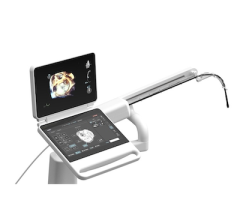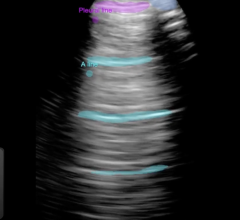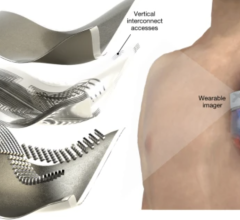
July 9, 2012 — A new report issued in June by the American College of Cardiology (ACC) and developed in collaboration with 10 other professional societies provides detailed criteria to help clinicians maximize the appropriate use of certain noninvasive vascular tests when caring for patients with suspected or known non-coronary arterial disorders.
“This is the first systematic and comprehensive evaluation looking at appropriate indications for vascular testing, such as ultrasound or functional testing,” said Emile R. Mohler III, M.D., director of vascular medicine for the University of Pennsylvania Health System and chair of the writing committee. “We hope this document will help clinicians determine whether or not and when to refer individual patients for testing.”
Such decisions affect a growing number of patients as the population ages. Mohler estimates more than 20 million adults in the United States have some form of vascular disease, and would likely be a candidate for these types of tests.
Ultrasound and other noninvasive laboratory tests can be essential tools to help clinicians evaluate vascular blockages and disease, for example, in the arteries of the neck, kidneys, abdomen and lower extremities, as well as the aorta itself. Such testing also plays a central role in surveillance of the vascular system in some patients to help inform treatment decisions and prevent serious problems, and is part of follow-up after peripheral vascular procedures, such as arterial bypass, surgical removal of plaque (endarterectomy) or stenting.
The panel identified common clinical scenarios when noninvasive vascular testing might be considered in patients with suspected or known non-coronary arterial disorders (e.g., narrowing or blockages in the arteries of the neck, kidneys, abdomen or legs, abdominal aortic aneurysms, arterial dissection). Applying a rigorous rating scale, the 19-member panel then assessed the appropriateness of each indication and often at different time intervals (3-5, 6-8 and 9-12 months).
The group found arterial vascular testing to be “appropriate” in about half of the clinical situations evaluated. Overall, vascular studies were deemed appropriate when clinical signs and symptoms were the main reason for testing. For example, Mohler explains it is reasonable to order a lower extremity vascular study for a patient who reports calf pain upon walking that resolves with rest. Tests that were conducted in patients with existing atherosclerotic disease or to establish a “baseline” after a revascularization procedure were also considered appropriate based on ratings.
One-third of the indications were rated as “uncertain.” According to Mohler, these indications represent variations in practice and reveal important gaps in the evidence, prompting the panel to call for clinical and cost-effectiveness studies on non-invasive vascular testing. Notably, the panel determined one in five uses of vascular testing to be “inappropriate,” meaning that, although doing the test does not cause harm, the information gleaned would not further inform clinical judgment. A few examples include:
- Ordering an ultrasound of the carotids in someone at low risk for heart attack or stroke;
- Screening for kidney artery disease in someone with peripheral artery disease with well-controlled high blood pressure (hypertension) on one medication;
- Choosing to perform an abdominal ultrasound in a patient with non-specific lower extremity discomfort;
- Ordering a mesenteric artery ultrasound (arteries that supply the small and large intestines) as an initial test to evaluate the patient with chronic constipation or diarrhea; and
- Performing a follow-up study for a patient with a normal baseline study who has no new symptoms.
“As imaging technology and clinical applications continue to advance, the healthcare community needs to understand how to best incorporate these technologies into daily clinical care,” said Mohler. “These appropriate use criteria should guide clinicians as to what is an appropriate and inappropriate test so that we can rationally decide when testing is the best next step, especially in this time of cost-effectiveness in medicine.”
In addition to looking at the reasons for ordering these tests, the work group also sought to determine how frequently repeat testing is needed in clinical practice in light of the need for ongoing surveillance in some patients.
Mohler stresses these criteria should not supersede sound clinical judgment for individual patients. The document also outlines key research areas moving forward. A related report presenting appropriate use criteria for vascular laboratory testing to evaluate venous circulation is expected to be released in late fall 2012.
For more information: www.cardiosource.org/ACC


 September 04, 2025
September 04, 2025 









